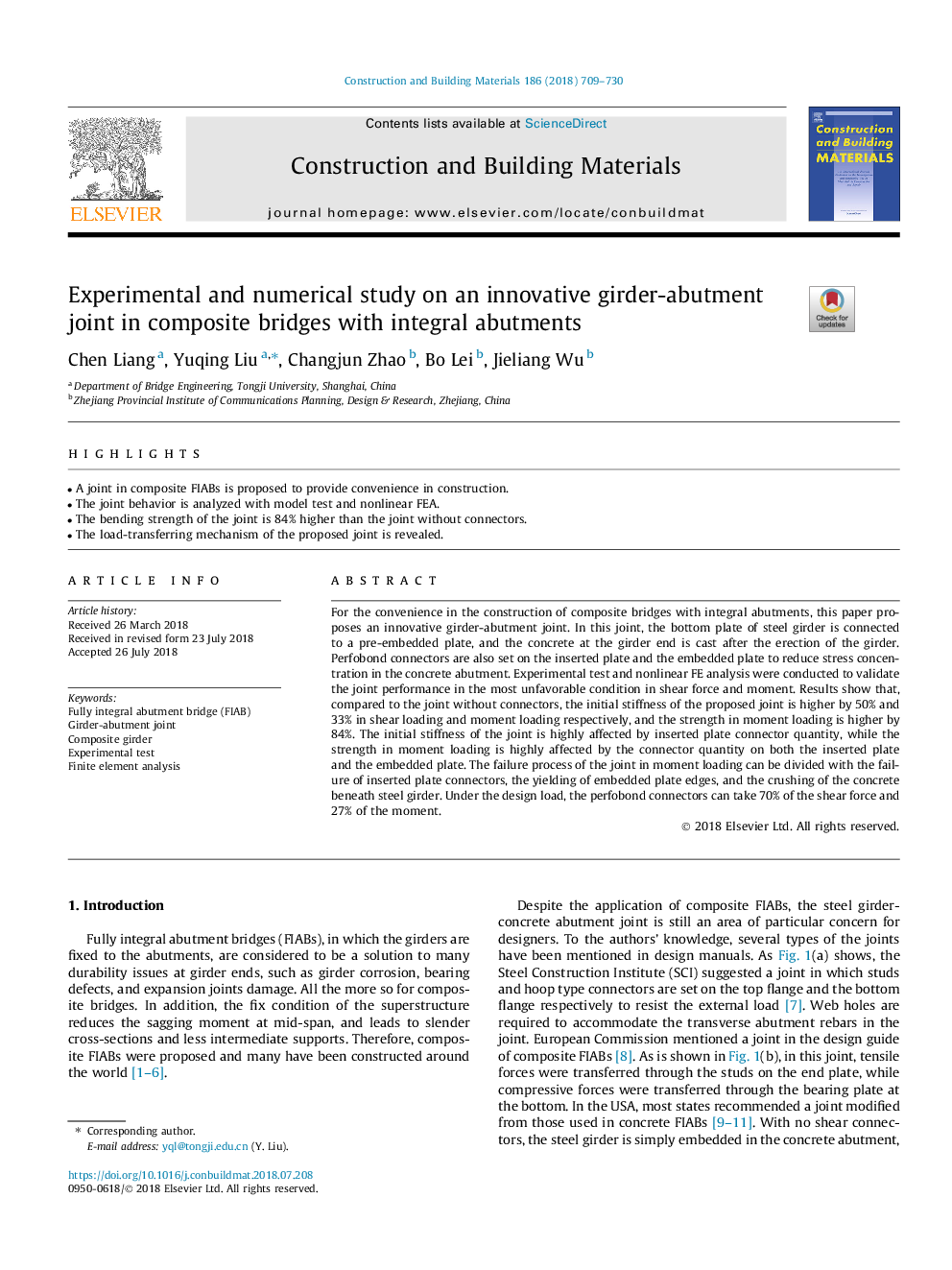| Article ID | Journal | Published Year | Pages | File Type |
|---|---|---|---|---|
| 6711784 | Construction and Building Materials | 2018 | 22 Pages |
Abstract
For the convenience in the construction of composite bridges with integral abutments, this paper proposes an innovative girder-abutment joint. In this joint, the bottom plate of steel girder is connected to a pre-embedded plate, and the concrete at the girder end is cast after the erection of the girder. Perfobond connectors are also set on the inserted plate and the embedded plate to reduce stress concentration in the concrete abutment. Experimental test and nonlinear FE analysis were conducted to validate the joint performance in the most unfavorable condition in shear force and moment. Results show that, compared to the joint without connectors, the initial stiffness of the proposed joint is higher by 50% and 33% in shear loading and moment loading respectively, and the strength in moment loading is higher by 84%. The initial stiffness of the joint is highly affected by inserted plate connector quantity, while the strength in moment loading is highly affected by the connector quantity on both the inserted plate and the embedded plate. The failure process of the joint in moment loading can be divided with the failure of inserted plate connectors, the yielding of embedded plate edges, and the crushing of the concrete beneath steel girder. Under the design load, the perfobond connectors can take 70% of the shear force and 27% of the moment.
Related Topics
Physical Sciences and Engineering
Engineering
Civil and Structural Engineering
Authors
Chen Liang, Yuqing Liu, Changjun Zhao, Bo Lei, Jieliang Wu,
